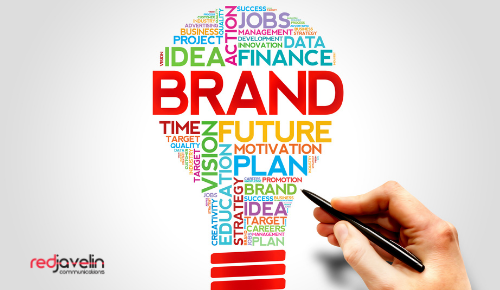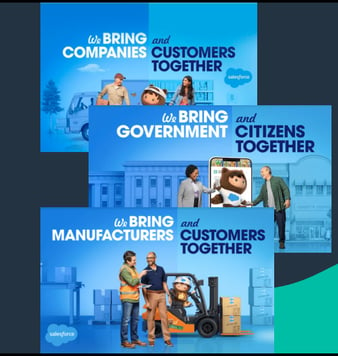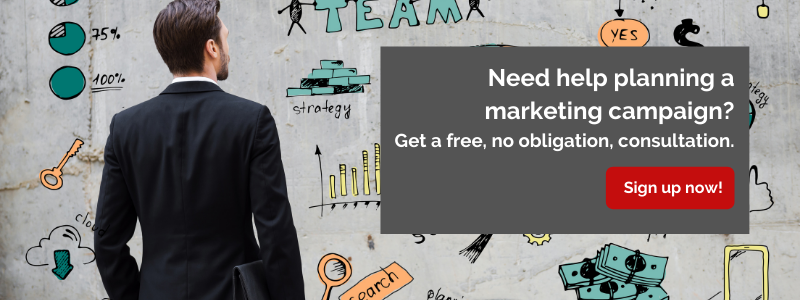 It is that time of year again when marketers are developing their budgets and plans for 2021. It is always an organizational struggle between sales, marketing, and the executive team on how to split the budget between lead generation and brand awareness, New research from LinkedIn's B2B Institute released at HubSpot's annual Inbound Conference may change your mind on how you allocate your budget.
It is that time of year again when marketers are developing their budgets and plans for 2021. It is always an organizational struggle between sales, marketing, and the executive team on how to split the budget between lead generation and brand awareness, New research from LinkedIn's B2B Institute released at HubSpot's annual Inbound Conference may change your mind on how you allocate your budget.
Mind Share Drives Market Share
The B2B Institute claims that every brand, B2B and B2C, has an awareness problem. For example, in 2019, Salesforce conducted market research and was stunned at what they learned. Their research showed that most professionals have heard of Salesforce but don't know what Salesforce actually is or what it sells.
"We discovered most people had heard of Salesforce, but few people knew how we could help their business grow. We actually had an awareness problem." - Colin Fleming, SVP of Global Brand, Salesforce
This is because Salesforce didn't have mental availability or situational awareness. In other words, there was no context that made the connection between the brand and the value that it brings to its customers.
Mental availability is about increasing the probability your brand comes to mind in different buying situations.
In 2019, Salesforce launched its Trailblazer Campaign to build mental availability across CRM buying situations. The campaign was a huge success, and Salesforce nearly doubled their sales, proving that mind share drives market share by linking the brand to more buying situations.

Here are four reasons why mental availability is the single most important objective in B2B marketing.
1. 95-5 Rule
The 95-5 rule is a very important concept to socialize among your marketing, sales, and executive teams. The 95-5 rule states that most buyers are out-market at any given time. Only 5% of your total targeted market will enter the buying cycle at any one time, while 95% of your total available market is not "in-market" meaning they are not in the buying cycle at any given time.
That means your lead generation programs are only meaningful to 5% of your total available market!
Most organizations believe B2B brands grow by moving buyers down the funnel right away. In fact, 96% of marketers believe that if they run "in-market" lead generation campaigns, they can expect results in 2 weeks. However, this is not the case. Just because someone is consuming your content doesn't mean they are in-market. Buyers decide to go "in-market," not marketers.
But the key point is that if buyers don't know you when they come in-market, then it's already too late. To grow a brand, you need to market to people who aren't in-market now so that when they do enter the market, your brand is top-of-mind.
Key Takeaways:
- Marketers and sales need to understand the triggers that put their targeted buyers in-market clearly. For example, during the pandemic, the Work from Home mandate was a trigger for video conferencing products, and lack of retail help is a trigger for more ecommerce technology.
- Once prospects are in-market, you have to be able to identify them. One way to do this is to overlay intent data into your advertising programs.
- Continue educating potential buyers when they are out-of-market, connecting your brand to your targeted customers' pain points and buying scenarios so that your brand comes to mind in different buying situations.
- Organizations need to understand that middle-of-funnel lead generation campaigns are only meaningful to 5% of your total available market.
2. Brand Rejection
The research showed that 71% of marketers believe brand perception is more important to growth than brand awareness. The truth is that 9 out of 10 people who have never used the brand don't actively reject it. Two out of three people who have previously used the brand (but don't use it anymore) still do not actively reject it.
The real problem marketers face is brand unawareness because most people don't think about your brand at all.
Key Takeaways:
- Rather than obsessing over perception, marketers should obsess over awareness.
- Use thought leadership, PR, and content to validate your claims and establish credibility.
3. Positioning Does Not Determine Your Competition
Your offering may be completely different than that of the big brands in your category, but it doesn't mean that you don't compete with them. Your main competitors will be the biggest brands in the category - irrespective of image or positioning.
Big brands have natural advantages. The biggest brands have the most mental availability, and buyers buy what's mentally available.
Key Takeaway:
- Strong branding in all marketing activities is needed to overcome the natural attention bias towards big competitors.
4. The Role of Customer Loyalty
Sixty-five percent of marketers believe customer loyalty is more important than customer acquisition. But there is only one real strategy to grow in B2B - primarily from new customer acquisition, expanding the size of your customer base.
Don't mix growing revenue with market share. You can double your revenue without even impacting your market share. Gaining more revenue from existing customers will help you grow your company, but it doesn't help you grow your brand or penetration in a given market.
Focus on Building Mental Availability
What is a marketer to do? How should you allocate your budget? Focus on creating context between your brand and your customer's pain points and this will build mental availability. Mental availability is about being remembered. Here are the three things you need in your plan to grow your B2B brand.
- Reach everyone in the category.
- Message around key entry points to link your brand to key buying situations.
- Brand everything with distinctive brand assets.
To learn more sign up for a free consultation today.




